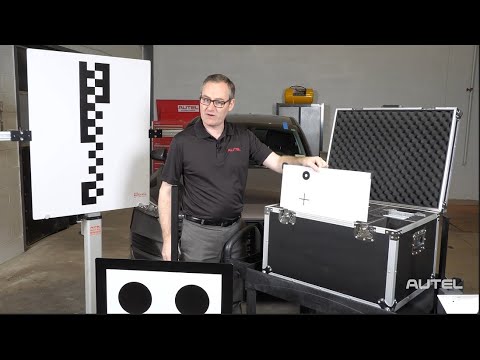
The Role of Data in Enhancing Driver Experience
Beyond safety, ADAS technologies use data to offer a more personalized and enjoyable driving experience. From predictive maintenance to customized driver assistance features, the intelligent use of data is transforming the relationship between drivers and their vehicles.

Diagnosing ADAS Sensor Malfunctions
Professional diagnostic tools and an awareness of the symptoms of sensor failure are essential for identifying issues with ADAS sensors. Early diagnosis can prevent further complications.
Case Studies: ADAS in Action
Several real-world examples highlight the efficacy of ADAS technologies in preventing accidents and saving lives. These case studies demonstrate the practical benefits of data-driven driver assistance systems in various driving conditions and scenarios.
Navigating Warranty and Repair for ADAS Sensors
Understanding the warranty and repair options for your vehicle’s ADAS sensors can save time and money. This section will guide you through what to look for in a repair service and how to navigate warranty claims.
Radar sensors play a pivotal role in ADAS, offering reliable measurements of speed and distance from objects and other vehicles. These sensors are instrumental in functions like adaptive cruise control, collision avoidance, and blind-spot detection.
The Cost of Calibration: An Investment in Safety
While the cost of ADAS calibration might seem prohibitive to some, this section argues that it is a worthwhile investment in safety, exploring average costs and insurance coverage.
The Calibration Process Explained
ADAS calibration is a meticulous process that requires professional equipment and expertise. This section breaks down the types of calibration and what vehicle owners can expect during the procedure.
Challenges and Solutions in Data Collection
Despite their benefits, ADAS technologies face challenges related to data collection, such as privacy concerns and the need for robust data security measures. Addressing these challenges is crucial for maintaining user trust and ensuring the widespread adoption of ADAS.
Data Processing and Analysis
The collected data undergoes extensive processing and analysis to translate raw sensor inputs into actionable information. This process involves sophisticated algorithms and, increasingly, artificial intelligence (AI) and machine learning (ML) techniques to predict potential hazards and optimize driving decisions in real-time.
Questions to Ask Your Technician
Before proceeding with calibration, ask about the technician’s experience, the equipment used, and any guarantees on the calibration work. This can help ensure the quality and reliability of the service.
Future of ADAS Sensors and Technologies
As the automotive industry continues to evolve, so too will ADAS technologies. This section will explore upcoming innovations and how they might integrate with the autonomous vehicles of the future.
Understanding
Portable Adas Systems
ADAS encompasses a broad spectrum of technologies designed to enhance vehicle safety and driver convenience. These range from basic functions like tire pressure monitoring to complex systems for automatic braking and lane-keeping assistance. The effectiveness of these systems hinges on their ability to collect, process, and act upon data in real-time.
ADAS sensors are at the heart of modern automotive safety and efficiency, offering a range of features that reduce the risk of accidents and enhance the driving experience. As technology advances, the capabilities of these sensors will continue to expand, paving the way for a new era of autonomous driving.
What to Expect During Calibration
The calibration process involves adjusting the ADAS sensors and cameras to the manufacturer’s specifications. This ensures that the system’s readings are accurate and that the safety features function as intended.
Types of Calibration: Static vs. Dynamic
Calibration can be classified into two main types: static and dynamic. Static calibration is conducted in a controlled environment, while dynamic calibration involves calibrating the ADAS system as the vehicle is driven on the road.
Understanding ADAS Sensors
ADAS sensors are the eyes and ears of modern vehicles, providing critical data to assist with driving tasks. These sensors include cameras, radar, lidar, and ultrasonic sensors, each serving a unique function. Yet, their complex nature means they are susceptible to various malfunctions.
The Role of Calibration in Future Vehicles
As vehicles become increasingly autonomous, the accuracy of ADAS systems will be paramount. Calibration will remain a critical component of vehicle maintenance, ensuring that these advanced systems function as intended.
FAQs
Conclusion
ADAS features represent a significant advancement in automotive technology, with the potential to not only enhance safety and convenience but also positively impact the resale value of vehicles. As the market continues to evolve, understanding and adapting to these changes will be crucial for consumers looking to maximize their investment in a vehicle.